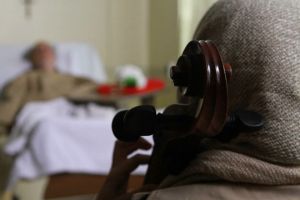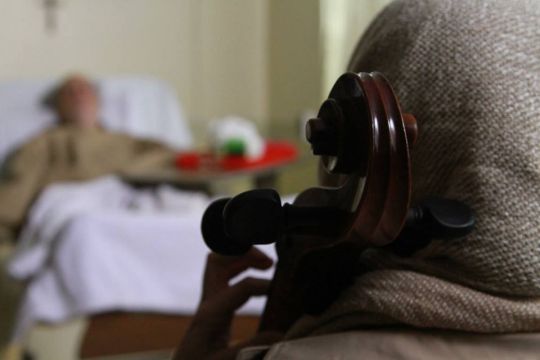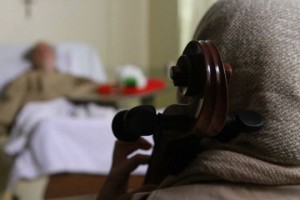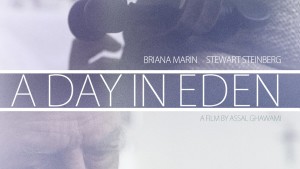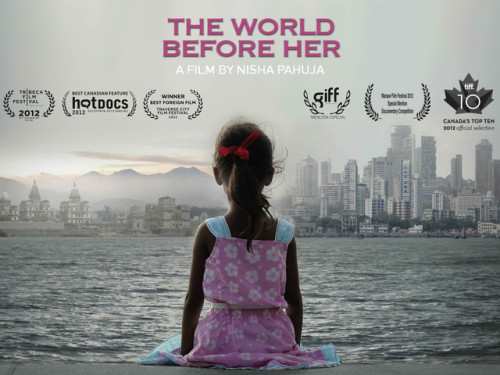
This guest post by Asma Sayed previously appeared at AwaaZ Magazine and appears here as part of our theme week on Asian Womanhood in Pop Culture. Cross-posted with permission.
“I hate [Mahatma] Gandhi; frankly speaking, I hate Gandhi,” declares Prachi, a 24-year-old young woman. “I am here to win [the Miss India title], and that’s my only goal,” says Ruhi, a 19-year-old. Indo- Canadian director Nisha Pahuja’s documentary film The World Before Her captures the worlds of these two young women representing many other women in contemporary India. The World Before Her is a thought-provoking, disturbing, and yet, compelling documentary that brings together the seemingly opposite worlds of Hindu nationalist ideologies and beauty pageants. Prachi and Ruhi denote dualistic faces of a country undergoing swift change. The documentary juxtaposes two female-dominated Indian communities: one is centered around the biannual camps organized by Durga Vahini, women’s wing of Vishwa Hindu Parishad (VHP), a Hindu nationalist organization, and the other is the month-long preparatory training event leading up to the live broadcast of the Miss India beauty pageant.
The film was completed in 2012 and has been on the international film festival circuit in the interim, and won many awards, but its theatrical release in India in June 2014 coincides in ironic ways with the election of Prime Minister Narendra Modi in May 2014. Modi’s political party, the Bharatiya Janata Party (BJP) is known to be closely affiliated with the Rashtriya Swayamsevak Sangh (RSS), a Hindu nationalist group that operates on the principles of Hindutva. VHP, founded in 1964, is closely aligned with the RSS and functions under the umbrella of Sangh Parivar, a group of organizations dedicated to Hindu nationalist movement. In short, these are different groups that share similar ideologies and have strong ties to the current ruling party in India. Prime Minister Modi is famously known to have been an active member of the RSS since the age of 8.

Male training camps, called shakhas, organized by the youth wing of VHP/RSS, called Bajrang Dal, have existed for decades and have branches in India and abroad, and their activities have been largely known. By contrast, very little information has circulated about the female wing—Durga Vahini (Carrier of Durga)—which is a comparatively newer innovation with roots going back to 1991. Pahuja’s direction exposes this largely unknown female world that prepares women for traditional Hindu social roles as wives and mothers, but also for militia-style combat in defense of the Hindu nation, if necessary. Pahuja is the first filmmaker to have gained access to these exclusive camps organized by the Durga Vahini group. Her film is a courageous attempt to present the realities of extremist ideologies taught in the camps, and of linking them to the various events that have troubled India in the last decade and a half: the film shows footage of the Malegaon bombings, the Gujarat pogrom of 2002, and VHP/RSS members consistently acting as morality police by violently ransacking bars to ensure girls and women do not drink, dance, and mingle with the opposite sex.
Girls attending the Durga Vahini camps are between the ages of 12 and 25. They follow a regimented training schedule that includes martial arts, physical fitness training, and lectures that remind them of their Hindu identity. They are instructed about the virtue of fighting against Muslims, Christians, and Westernization, all presented as the antithesis of Hindu nationalist ideals. The film captures a lecture where girls and young women are being taught that “Muslims and Christians are attacking our [Hindu] culture,” and that the people in caps and beards look like demons similar to those described in the ancient Hindu scriptures. They are told that it is not Gandhi’s non-violence that brought independence to India, but the sacrifice of thousands of Hindu martyrs.
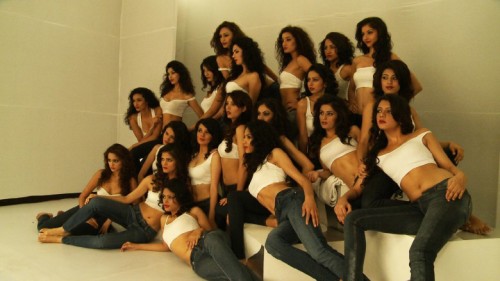
Prachi, one of the strongest Durga Vahini female members, who with several years of experience in the camp, also acts as a leader to the next generation of campers, speaks out against beauty pageants, the second subject of the film, which, to her, represent Western decadence. Having herself attended more than 40 camps, Prachi has been inculcated into accepting the values that the camp organizers promote. Girls in the camp chant simultaneously “dudh mango kheer denge; Kashmir mango chir denge” – “if you ask for milk, we will give you rice pudding; if you ask for Kashmir, we will slit your throat,” referring to India’s long conflict with Pakistan over the Kashmir valley region. When a camper is asked if she has any Muslim friends, she replies, “I am very proud to say that I have no Muslim friends.” Prachi too declares that she is willing to build a bomb and blast it “if conditions call for it.”
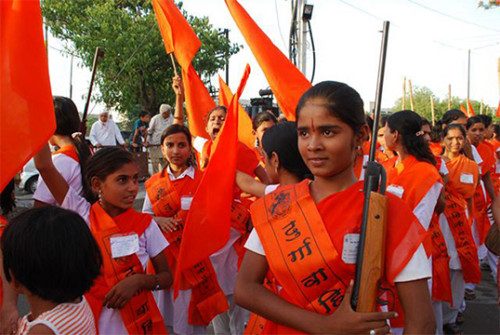
On the other hand, Prachi’s father is eager to marry her off against her wish. He has no qualms admitting that he hits her, if necessary, to ensure that she obeys. He proudly mentions that when Prachi was a child he burned her leg with a hot iron rod. Prachi does not object; she believes it is his right as a parent. In a country where 750,000 girl fetuses are aborted every year and the statistics for female infanticide remain undocumented, Prachi is happy that her father let her live. She points out that “many traditional families kill a girl child. He let me live; that’s the best part,” she says.
Then again, in Mumbai, Pahuja cinematographically captures the daily activities of 20 young Miss India hopefuls. Their focus is dramatically different: filled with regimen–Botox injections, skin whitening treatments, catwalks, and diction training. This female world is one focused on glamour, on pleasing the male-dominated jury, and on preparing for the big break that will come with the title of Miss India. Many of the pageant’s participants aim for Bollywood screen-careers. In fact, many former winners have gone on to become famous Bollywood stars: Aishwarya Rai, Shusmita Sen, Priyanka Chopra and Lara Dutta, among others. However, the young women who perceive the Miss India pageant as a path to freedom, fame and equality, largely fail to note the irony of the situation as they are made to walk in front of juries in bikinis, or with their upper bodies covered under white sacks so that the jury members may assess the “beauty” of their legs: sexual objectification and conformity to traditional beauty paradigms is not the equivalent of personal freedom. The few who are aware, at all, of the problematic of their current situation, brush it off, considering it a small price to pay to achieve the stardom that awaits them. And, of course, that stardom will come at a cost, as well.

Pahuja’s camera follows Ruhi, one of the contestants from a lower-middle class family in a small town. Ruhi’s parents support her dream, and are keen to see her win the title. In many ways, Ruhi represents the dreams of a young generation of women in India. Pahuja also interviews Pooja Chopra, a former Miss India. Raised by a single mother, Chopra participated in the pageant in an attempt to prove herself to her father, who had wanted her mother to either kill her (after she was born) or give her up for adoption, as he did not want a girl child. Thus, the documentary beautifully mirrors the lives of different women in many ways, all of whom in one way or another, are attempting to prove their worth and their right to live, whether it is in taking up arms in defense of Hindu nationalism or succumbing to traditional ideals of worth equated with female beauty.
While these young girls and women are all attempting to empower themselves, their attempts are reflective of the inherently flawed options available to them. There is an innate sadness in these women’s attempts at either becoming part of a right wing fundamentalist group or using their bodies to showcase their worth. Neither of these efforts contribute to improving women’s condition and advancing women’s rights in patriarchal India, now troubled by a variety of issues including increasing gender tensions in a global world where women are, to greater and lesser degrees, aware that change is possible, if not quite within reach. However, the recent rise in gang rapes is a testament to the fact that India has a very long way to go before majority of women in India will be anywhere closer to gaining equal rights.
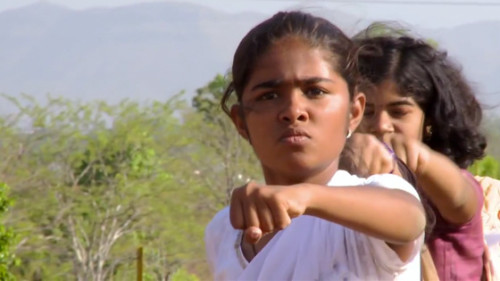
With Modi coming to power, it becomes increasingly important to be aware of the influence of groups such as VHP and RSS, and how they will sway the political rhetoric as well as women’s rights in India. In a recent interview with filmmaker Shazia Javed, Pahuja, speaking of the content of her film, said that “with the new government, people really need to know that these things exist . . . Now that the BJP and Modi are in power, we have no idea what is going to happen. But to me, it feels that these groups feel a certain kind of validation. They feel emboldened; there is a confidence now. So I think that the film reminds us that we can’t close our eyes. It reminds us that there is a potential for these movements to grow and that is a threat.” Pahuja sees the film as going beyond the issues of women’s rights; according to her, the film is about India, and what’s happening there, and the fear about the future as the culture of the country goes through extreme changes. She adds that, through the film, she would like to showcase the kind of “hatred being taught in the camps in the guise of patriotism.” Starting in October 2014, Pahuja has done grassroots screening of the film with women’s rights and human rights activists, and those who work in the area of communal harmony. The World Before Her, well researched and edited, is a welcome addition to social issue films.
Dr. Asma Sayed teaches English, Communication Studies, and Women’s Studies in Canadian universities. She has published three books as well as several refereed articles and book chapters, on such topics as diaspora literature, Canadian comparative literature, Indian cinema, and women’s representation in cinema. She writes a film column for AwaaZ: Voices, a periodical in Kenya.
